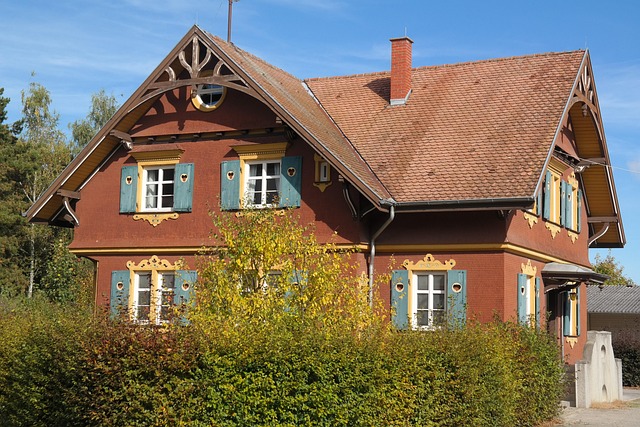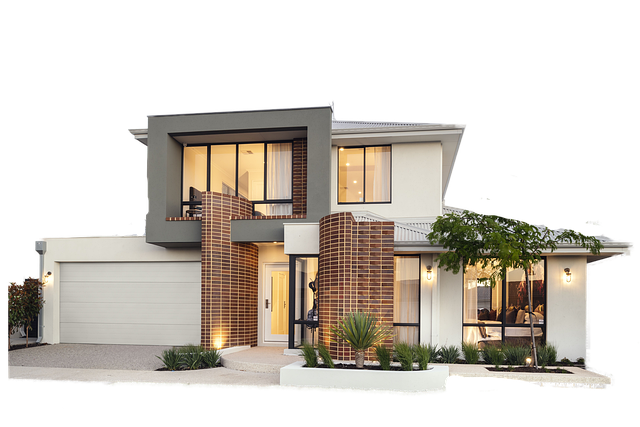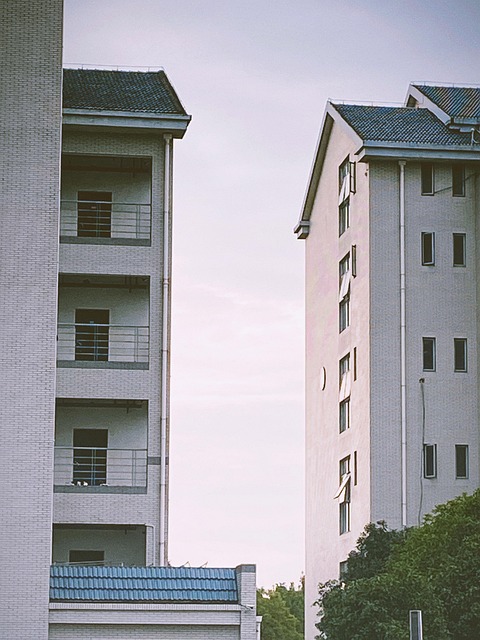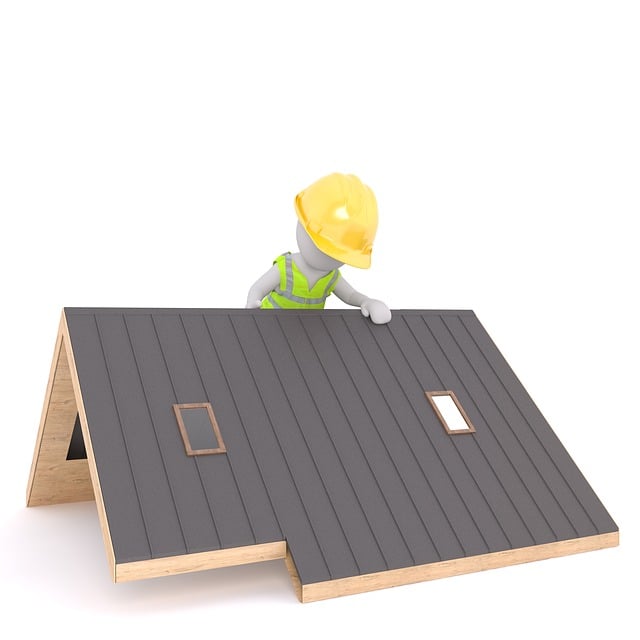Homeowners face unexpected costs from roofing maintenance, with repairs ranging from $500 to $10,000. Common issues include missing/damaged shingles, leaks, and structural damage from extreme weather. Asphalt shingles are the most common, affordable repair option with a 30-year lifespan. Metal roofs offer durability and eco-friendliness but are initially more expensive. Choosing smart materials and professional installation saves time, money, and stress for homeowners. Government grants and incentives aid in affording energy-efficient roofing solutions that reduce long-term costs. Regular maintenance extends roof life by preventing damage and improving insulation. The future of residential roofing leans green with recycled materials, prefabricated systems, and solar tiles.
In today’s economic climate, finding affordable roof solutions for homes is more important than ever. This comprehensive guide explores various aspects of residential roofing, focusing on budget-friendly options that don’t compromise quality or longevity. From understanding common issues and their costs to examining sustainable materials and government incentives, we provide insights to help homeowners make informed decisions. Additionally, we delve into DIY installation vs. professional services and share successful case studies, offering a roadmap for achieving reliable, cost-effective roofing solutions.
Understanding Common Residential Roofing Issues and Their Costs

Many homeowners often overlook the importance of regular maintenance until a roofing issue arises, leading to unexpected and costly repairs. Common residential roofing problems range from missing or damaged shingles to leaks and structural damage caused by extreme weather conditions. According to industry reports, the average cost to repair a roof ranges between $500 to $10,000, depending on the extent of the damage and the type of material used.
Shingle replacement is one of the most frequent repairs, with asphalt shingles being the most popular choice due to their affordability and ease of installation. Other issues like flashing problems, which can lead to leaks, and decay in wooden structures caused by moisture infiltration, also contribute significantly to roofing expenses. Understanding these common problems and their associated costs is essential for homeowners looking for affordable roof solutions.
Exploring Budget-Friendly Roofing Materials for Homes

When it comes to residential roofing, exploring budget-friendly options is a smart move for homeowners looking to save costs without compromising quality. The market offers an array of affordable materials suitable for various climates and architectural styles. One popular choice is asphalt shingles, which are not only cost-effective but also easy to install and maintain. They provide good protection against weather and can last up to 30 years with proper care.
Another eco-friendly and budget-conscious option is metal roofing. While initially more expensive than traditional materials, metal roofs offer excellent durability, reflectivity, and longevity. They are especially beneficial in regions prone to severe weather due to their resistance to high winds and hail damage. Additionally, metal roofing can reduce energy costs as it reflects heat, making it an attractive choice for environmentally conscious homeowners seeking affordable residential roofing solutions.
The Benefits of Longevity and Low Maintenance in Affordable Roofing

When it comes to affordable roofing solutions for homes, longevity and low maintenance are two key factors that homeowners often look for. In the realm of residential roofing, choosing materials and systems that offer durability and ease of upkeep can save time, money, and stress in the long run. Longevity ensures that your roof protects your home for many years, reducing the need for frequent repairs or replacements. This is especially beneficial for those seeking cost-effective options without compromising on quality.
Low maintenance roofing systems simplify the process of keeping your home’s exterior in top condition. By selecting materials that are resistant to weathering, fading, and damage, you can minimize routine cleaning, repainting, or repair tasks. These benefits not only offer peace of mind but also align with today’s busy lifestyles, where efficiency and convenience are highly valued.
DIY vs Professional Installation: Which is Better for Your Wallet?

When considering affordable roof solutions, one key decision point is whether to tackle a residential roofing project yourself (DIY) or hire professionals. DIY installation can be an attractive option due to its cost-effectiveness, offering significant savings compared to professional services. Many homeowners prefer taking control of their repairs and enjoying the sense of accomplishment that comes with completing a job themselves. However, residential roofing involves complex tasks that require specific skills, knowledge, and tools. Mistakes in measuring, nailing, or sealing can lead to costly leaks and structural damage over time.
Professional roofers, on the other hand, bring expertise and experience to ensure proper installation. While their services may come at a higher upfront cost, they offer peace of mind knowing that the job is done right. Quality workmanship and warranties are often associated with professional installations, which can save homeowners from future repairs. In the long run, investing in professional roofing may prove more economical by preventing severe weather damage or structural issues down the line, thus saving on extensive repairs or roof replacements.
Government Grants and Incentives for Homeowners Seeking Affordable Roofs

Many homeowners looking to repair or replace their roofs often face financial challenges, but help is available through government grants and incentives designed to support affordable residential roofing. These programs aim to make high-quality roofing more accessible by offering monetary assistance, tax benefits, or low-interest loans specifically for home improvements, including roof repairs and replacements.
Eligible homeowners can tap into these funds to cover the costs of energy-efficient roofing materials, which not only reduce long-term expenses but also contribute to environmental sustainability. By taking advantage of government incentives, folks can enhance their homes’ durability and curb appeal while saving money on their roofs.
Case Studies: Successful Implementation of Cost-Effective Residential Roofing Solutions

In recent years, numerous case studies have highlighted successful implementations of cost-effective residential roofing solutions. These projects demonstrate how homeowners can achieve both durability and aesthetics without breaking the bank. For instance, a study in suburban Chicago showed that installing energy-efficient, reflective roofs reduced cooling costs by 20% for participating homes, providing significant savings over traditional roofing materials.
Another notable case involved a community revitalization effort in an urban area where older homes were given new, affordable rooflines. The use of modern, lightweight roofing systems not only improved the structural integrity of the buildings but also enhanced their overall appearance, increasing property values in the neighborhood. These real-world applications underscore the potential for residential roofing to be both economical and impactful, setting a precedent for future sustainable and cost-conscious construction practices.
Tips for Maintaining an Affordable Roof to Extend Its Lifespan

Regular maintenance is key to extending the lifespan of any roof, especially those on a tight budget. For residential roofing, a simple yet effective strategy involves annual inspections and timely repairs. Look for signs of damage like missing or damaged shingles, leaks, or mold growth, addressing these issues promptly to prevent further complications. Cleaning gutters regularly is another crucial step; blocked gutters can lead to water damage, compromising the roof’s integrity.
Additionally, keeping the roof well-insulated helps in energy efficiency and reduces the risk of extreme temperature-related stress. Using affordable yet high-quality materials for repairs and replacements can also significantly extend the life of your roof. Remember, a well-maintained residential roofing system not only saves you from costly repairs but also ensures your home stays protected from the elements.
Future Trends in the Industry: Sustainable and Inexpensive Roofing Options

The future of residential roofing is poised for a significant shift towards sustainability and cost-effectiveness. As environmental concerns grow, industry leaders are exploring innovative materials and technologies to create eco-friendly roofing solutions that won’t break the bank. One notable trend is the increasing use of recycled and renewable materials, such as recycled metal, bamboo, and plant-based composites, which not only reduce waste but also offer excellent durability and long-term savings for homeowners.
Additionally, advancements in manufacturing processes are making these sustainable options more accessible and affordable. For example, prefabricated roofing systems can be mass-produced, reducing labor costs and installation time. Solar tiles and integrated photovoltaic (PV) panels are also gaining popularity as they double as functional roofing while generating clean energy. These trends suggest a greener and more economical future for residential roofing, providing homeowners with options that benefit both the environment and their wallets.
